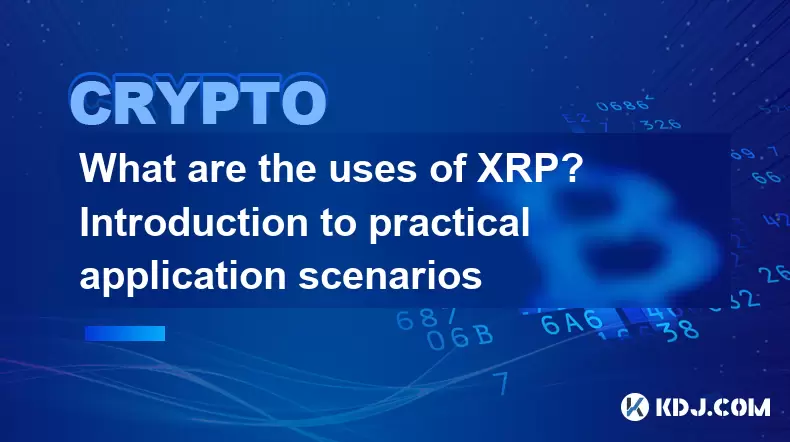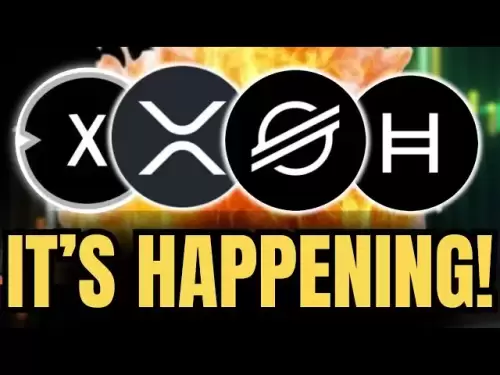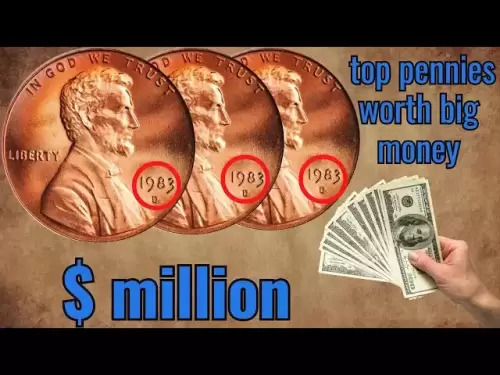-
 Bitcoin
Bitcoin $114400
1.32% -
 Ethereum
Ethereum $3499
2.20% -
 XRP
XRP $2.922
4.26% -
 Tether USDt
Tether USDt $0.0000
0.03% -
 BNB
BNB $752.6
1.53% -
 Solana
Solana $161.8
1.64% -
 USDC
USDC $0.9999
0.01% -
 TRON
TRON $0.3267
1.32% -
 Dogecoin
Dogecoin $0.1991
3.02% -
 Cardano
Cardano $0.7251
3.29% -
 Hyperliquid
Hyperliquid $38.32
3.36% -
 Stellar
Stellar $0.3972
7.58% -
 Sui
Sui $3.437
2.74% -
 Chainlink
Chainlink $16.29
3.65% -
 Bitcoin Cash
Bitcoin Cash $545.3
3.70% -
 Hedera
Hedera $0.2482
7.49% -
 Ethena USDe
Ethena USDe $1.001
0.03% -
 Avalanche
Avalanche $21.40
2.02% -
 Toncoin
Toncoin $3.579
1.56% -
 Litecoin
Litecoin $109.3
2.20% -
 UNUS SED LEO
UNUS SED LEO $8.951
-0.18% -
 Shiba Inu
Shiba Inu $0.00001220
2.75% -
 Polkadot
Polkadot $3.613
2.99% -
 Uniswap
Uniswap $9.173
3.78% -
 Monero
Monero $302.6
2.62% -
 Dai
Dai $0.0000
0.00% -
 Bitget Token
Bitget Token $4.320
1.52% -
 Pepe
Pepe $0.00001048
3.40% -
 Cronos
Cronos $0.1314
4.33% -
 Aave
Aave $259.4
3.54%
What are the uses of XRP? Introduction to practical application scenarios
XRP facilitates fast, low-cost cross-border payments, provides liquidity, enables micropayments, and supports remittances and asset tokenization, enhancing financial efficiency.
May 12, 2025 at 12:42 am

XRP, created by Ripple Labs, is a digital asset designed to facilitate fast and efficient cross-border payments. The primary function of XRP is to serve as a bridge currency, enabling the seamless transfer of value across different currencies and financial systems. This article explores the various practical application scenarios where XRP is used, highlighting its significance in the cryptocurrency ecosystem.
Cross-Border Payments
One of the most prominent uses of XRP is in cross-border payments. Traditional international transfers can be slow, expensive, and cumbersome due to the involvement of multiple intermediaries. XRP addresses these issues by enabling direct transfers between financial institutions.
For instance, banks and financial service providers can use XRP to settle international transactions in seconds, compared to the days it typically takes with traditional methods. This efficiency is achieved because XRP operates on a decentralized ledger, the XRP Ledger, which processes transactions quickly and at a low cost.
In practical terms, when a bank in the United States wants to send money to a bank in Japan, it can convert the USD to XRP, send the XRP to the Japanese bank, and then convert the XRP back to JPY. This process eliminates the need for correspondent banking relationships and reduces the costs associated with currency conversion and transfer fees.
Liquidity Provision
Another significant application of XRP is in providing liquidity. Liquidity is crucial for the smooth functioning of financial markets, especially in the context of international payments. XRP serves as a source of liquidity for financial institutions, allowing them to hold XRP in reserve and use it to facilitate transactions when needed.
For example, a financial institution might use XRP to ensure it has enough liquidity to process payments in different currencies. By holding XRP, the institution can quickly convert it to any currency required for a transaction, thus avoiding the delays and costs associated with traditional liquidity management.
This use of XRP is particularly beneficial for banks and payment providers operating in regions with less developed financial infrastructure, where access to liquidity can be challenging. By leveraging XRP, these institutions can enhance their ability to process international payments efficiently.
Micropayments
XRP is also used for micropayments, which are small financial transactions typically below the threshold of traditional payment systems. The low transaction fees and fast processing times of XRP make it an ideal solution for micropayments.
For instance, content creators and service providers can use XRP to receive small payments for their work or services. This could include paying for access to articles, videos, or other digital content, as well as tipping creators for their work. The use of XRP for micropayments enables a more flexible and efficient payment ecosystem, allowing for the monetization of content and services that were previously not economically viable.
Remittances
Remittances, or the transfer of money by foreign workers to their home countries, is another area where XRP is making an impact. Traditional remittance services often charge high fees and can take several days to process transactions. XRP offers a faster and more cost-effective alternative.
For example, a worker in the United States can use XRP to send money to their family in the Philippines. The transaction can be completed in seconds, with minimal fees, providing a significant improvement over traditional remittance services. This use of XRP not only benefits the sender and recipient but also helps to stimulate economic activity in the recipient's home country.
Tokenization and Asset Transfer
XRP is also used in tokenization and asset transfer. Tokenization involves converting real-world assets into digital tokens that can be traded on blockchain networks. XRP can be used to facilitate the transfer of these tokenized assets, providing a secure and efficient means of moving value.
For instance, a real estate company might tokenize a property and use XRP to transfer ownership of the tokenized asset. This process can be completed quickly and securely, without the need for intermediaries, reducing costs and increasing efficiency.
Similarly, XRP can be used to transfer other types of assets, such as commodities or securities, enabling a more streamlined and cost-effective asset transfer process.
Frequently Asked Questions
Q: Can XRP be used for everyday purchases?
A: While XRP is primarily designed for cross-border payments and liquidity provision, it can technically be used for everyday purchases. However, its adoption for such purposes is limited compared to other cryptocurrencies like Bitcoin or Ethereum, which have more established infrastructure for retail transactions.
Q: Is XRP regulated by any financial authorities?
A: XRP's regulatory status varies by jurisdiction. In some countries, it is treated as a digital asset or commodity, while in others, it may be subject to securities regulations. Ripple Labs has been involved in legal battles with regulatory bodies, such as the U.S. Securities and Exchange Commission (SEC), which has impacted its regulatory status in certain regions.
Q: How does XRP compare to other cryptocurrencies in terms of transaction speed and fees?
A: XRP is known for its fast transaction speeds and low fees. It can process transactions in 3-5 seconds, with fees typically less than a cent. In comparison, Bitcoin transactions can take 10 minutes to an hour and have higher fees, while Ethereum transactions can take around 15 seconds to a minute with varying fees depending on network congestion.
Q: Can individuals hold and trade XRP?
A: Yes, individuals can hold and trade XRP on various cryptocurrency exchanges. Many exchanges support XRP trading pairs, allowing users to buy, sell, and trade XRP with other cryptocurrencies or fiat currencies.
Disclaimer:info@kdj.com
The information provided is not trading advice. kdj.com does not assume any responsibility for any investments made based on the information provided in this article. Cryptocurrencies are highly volatile and it is highly recommended that you invest with caution after thorough research!
If you believe that the content used on this website infringes your copyright, please contact us immediately (info@kdj.com) and we will delete it promptly.
- Cryptocurrency, Altcoins, and Profit Potential: Navigating the Wild West
- 2025-08-04 14:50:11
- Blue Gold & Crypto: Investing Disruption in Precious Metals
- 2025-08-04 14:30:11
- Japan, Metaplanet, and Bitcoin Acquisition: A New Era of Corporate Treasury?
- 2025-08-04 14:30:11
- Coinbase's Buy Rating & Bitcoin's Bold Future: A Canaccord Genuity Perspective
- 2025-08-04 14:50:11
- Coinbase's Buy Rating Maintained by Rosenblatt Securities: A Deep Dive
- 2025-08-04 14:55:11
- Cryptos, Strategic Choices, High Returns: Navigating the Meme Coin Mania
- 2025-08-04 14:55:11
Related knowledge

What is Chainlink (LINK)?
Jul 22,2025 at 02:14am
Understanding Chainlink (LINK): The Decentralized Oracle NetworkChainlink is a decentralized oracle network designed to bridge the gap between blockch...

What is Avalanche (AVAX)?
Jul 22,2025 at 08:35am
What is Avalanche (AVAX)?Avalanche (AVAX) is a decentralized, open-source blockchain platform designed to support high-performance decentralized appli...

What is Polkadot (DOT)?
Jul 19,2025 at 06:35pm
Understanding the Basics of Polkadot (DOT)Polkadot (DOT) is a multi-chain network protocol designed to enable different blockchains to transfer messag...

What is Litecoin (LTC)?
Jul 23,2025 at 11:35am
Overview of Litecoin (LTC)Litecoin (LTC) is a peer-to-peer cryptocurrency that was created in 2011 by Charlie Lee, a former Google engineer. It is oft...

What is Monero (XMR)?
Jul 21,2025 at 10:07am
What is Monero (XMR)?Monero (XMR) is a decentralized cryptocurrency designed to provide enhanced privacy and anonymity for its users. Unlike Bitcoin a...

How to add indicators to Ethereum chart on TradingView?
Jul 19,2025 at 07:15am
What Is an Ethereum Chart on TradingView?The Ethereum chart on TradingView is a visual representation of the price movement of Ethereum (ETH) over a s...

What is Chainlink (LINK)?
Jul 22,2025 at 02:14am
Understanding Chainlink (LINK): The Decentralized Oracle NetworkChainlink is a decentralized oracle network designed to bridge the gap between blockch...

What is Avalanche (AVAX)?
Jul 22,2025 at 08:35am
What is Avalanche (AVAX)?Avalanche (AVAX) is a decentralized, open-source blockchain platform designed to support high-performance decentralized appli...

What is Polkadot (DOT)?
Jul 19,2025 at 06:35pm
Understanding the Basics of Polkadot (DOT)Polkadot (DOT) is a multi-chain network protocol designed to enable different blockchains to transfer messag...

What is Litecoin (LTC)?
Jul 23,2025 at 11:35am
Overview of Litecoin (LTC)Litecoin (LTC) is a peer-to-peer cryptocurrency that was created in 2011 by Charlie Lee, a former Google engineer. It is oft...

What is Monero (XMR)?
Jul 21,2025 at 10:07am
What is Monero (XMR)?Monero (XMR) is a decentralized cryptocurrency designed to provide enhanced privacy and anonymity for its users. Unlike Bitcoin a...

How to add indicators to Ethereum chart on TradingView?
Jul 19,2025 at 07:15am
What Is an Ethereum Chart on TradingView?The Ethereum chart on TradingView is a visual representation of the price movement of Ethereum (ETH) over a s...
See all articles

























































































